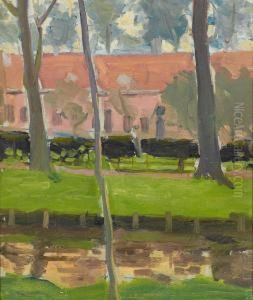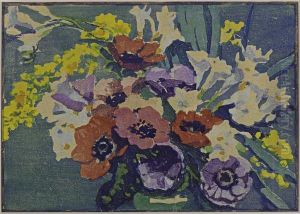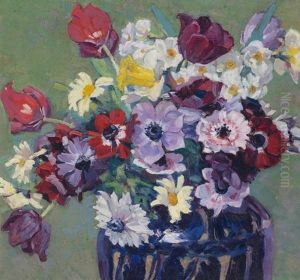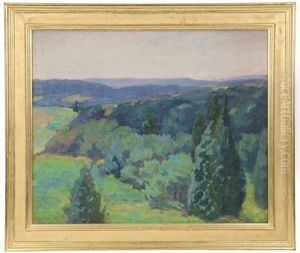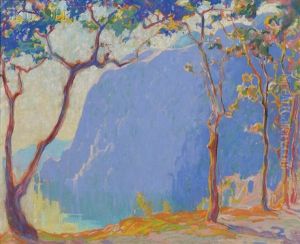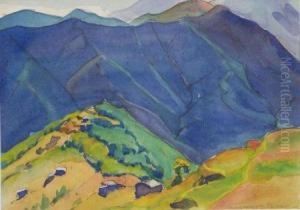Margaret Jordan Patterson Paintings
Margaret Jordan Patterson was an American artist known for her innovative printmaking techniques and her influence on the Arts and Crafts movement in the United States. Born on March 6, 1867, in Soquel, California, she grew up in a time when the artistic landscape of America was evolving rapidly. Patterson developed an early interest in art and pursued her education at the Pratt Institute in Brooklyn, New York. She further honed her skills in Paris, where she studied under renowned artists such as James McNeill Whistler and Frank Brangwyn.
Patterson's work was primarily focused on color woodcuts, a medium that she mastered and pushed to new limits. She was inspired by the natural world and often depicted floral subjects, landscapes, and occasionally urban scenes in her prints. Her style was characterized by bold compositions, vibrant colors, and an emphasis on light and shadow, which reflected the influence of Impressionism and Japanese woodblock printing.
Throughout her career, Patterson was a dedicated educator. She taught at the Dana Hall School in Wellesley, Massachusetts, and later at the Cambridge School of Domestic and Landscape Architecture for Women. Her influence on young artists was significant, and she encouraged her students to explore and develop their own artistic voices.
In the early 20th century, Patterson's work gained recognition. She exhibited at various venues, including the Panama-Pacific International Exposition in 1915, where she received a bronze medal. Her prints were collected by several prestigious institutions, and she became an important figure in the American Arts and Crafts movement, which emphasized the value of handcraftsmanship and the beauty of functional design.
Margaret Jordan Patterson lived a life dedicated to her art, passing away on January 20, 1950. Her legacy is that of a pioneer in the field of printmaking and as an artist who contributed significantly to the cultural fabric of early 20th-century American art. Today, her prints are considered collectible and are held in high esteem by collectors, museums, and art historians alike.


